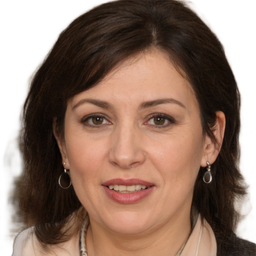Introduction
Financial management is the process of effective utilization of monetary resources. The present project report will explain the role of management of funds in the organization. This report will discuss dividend policy, financial markets, and derivatives for effective and efficient management of collected funds.
Dividend Policy
Dividend policy is the combination of certain guidelines that companies have to follow when they are distributing part of their profits to their shareholders (Deshmukh, Goel. and Howe, 2013). All the organizations generally do not allocate all their earnings as dividends to their investors so this policy assists managers to determine the amount of organizational earnings to be paid to the shareholders. There are various types of dividend policy which have been described hereunder:
Residual Dividend Policy
This policy is based on three key elements that are mentioned below:
- Target capital structure.
- Investment opportunity model.
- Cost of external capital.
Initially, the residual-dividend model primarily aims at deciding a target dividend payout ratio. Thereafter, managers determine the equity that will be needed to construct an optimal capital structure (Renneboog and Szilagyi, 2015). Primarily, equity funds will be collected through the use of retained earnings. Management decides optimal capital expenditures level to manage their cost of capital. As per this policy, companies use their total earnings for meeting business operational as well as expansion expenditures and if any surplus is left then it will be called a residual which will be used for dividend distribution. Henceforth, it seems to be very useful in capital projects while its disadvantage is fluctuations in business earnings that contribute to instability in dividends.
Stable Dividend Policy
This policy overcomes the limitation of the residual dividend model because it helps to maintain stability in dividends. Stability policy says that companies have to provide regular and stable dividends to the investors (Loudermilk, 2012). Henceforth, it reduces uncertainty in the shareholder's return. It is adopted by organizations that attempt to share their earnings with the investors rather than retaining them for future purposes.
NASDAQ international organizations follow a stable dividend policy in which managers ensure regular and stable dividend distribution to the shareholders. It is because; managers believe that continuous increases in dividend are not possible because of existing market uncertainties (Engombe, 2014). Therefore, they strive to maintain a balanced payment of investors' return which ultimately impacts on firm's corporate value.
Hybrid Dividend Policy
It is the combination of both residual and stable dividend policy. As per this model, companies set a minimum dividend which is relatively a small proportion of total business earnings so that managers will be able to maintain it easily (Naser, Nuseibeh, and Rashed, 2013). Moreover, they can offer extra dividends to the shareholders if actual incomes exceed the minimum set level. In this policy, companies use and maintain their debt/equity ratio for long-term purposes. In the present uncertain market, this is the highly used approach of international organizations. It is because; cyclical fluctuations have a great impact on business incomes which ultimately affects investors' return in the way of dividends (Murto and Terviö, 2014). It allows flexibility in dividend distribution according to the business performance.
Financial Market
It is the place at which people trade for various securities and commodities. Securities involve bonds and stocks while commodities include agricultural products and metals (Segal, Shaliastovich, and Yaron, 2015). In this market, a large number of buyers and sellers trade their equities, bonds, currency, derivatives, and others at lower costs. There are various types of financial markets that have been explained hereunder:
Money Market
It is a market segment where financial instruments with high liquidity and short maturities are traded. Participants use this market for short-term borrowing and lending purposes (Dieckmann and Plank, 2012). It can vary from many years to a time period of twelve months. For example, the following securities can be traded in the money market:
- Negotiable Certificate of Deposits (CDs),
- Treasury bills,
- Commercial Papers (CP)
- bankers acceptance
- Municipal notes
- Repurchase agreements (repos)
- Eurodollars
Thus, this market provides assistance to generate funds for meeting operational expenses.
Capital Market
It deals with long-term financial instruments such as long-term debt and equity-backed securities. In this market, funds are provided for a longer duration of more than one year (Carey and et.al., 2012). It has been classified into two types that are primary and secondary market, explained below:

Get an Extra 5% OFF On Your Order in Our App

Scan the QR code with your mobile to unlock an exclusive offer!
Download App Now Scan me
Scan mePrimary Market
It deals with new and fresh securities which provide huge assistance to large companies and governments to obtain required funds. They can sell their newly issued equity shares and bonds in this market and collect large amounts of funds. The sale of a fresh issue of equity and bond stock is termed an Initial Public Offering (IPO). It facilitates capital formation in the economy.
Secondary Market
This market segment trades for existing financial securities. After issuing fresh stock in the primary market, it will be traded in the secondary market (Horowitz, 2014). Various securities such as bonds, options, stocks,s, and futures are bought and sold in this market. Here, it is also used for trading goods and assets. A greater number of investors and speculators transfer their securities to another. It is a highly liquid market thus; preferred by investors who do not want to stick their money for a longer time period.
Difference Between Money and Capital Market
| Basis of Difference | Money market | Capital market |
| Collection of funds | The money market helps to gather funds for a shorter duration by dealing with highly liquid securities (Money and Capital Market, 2012). | The capital market deals with long-term securities henceforth; funds can be generated for a longer time period. |
| Financing | It assists companies in funding their routine activities. Thus, it can be used to meet our operational expenses. | Its purpose is to finance capital expenses such as business expansion. |
Difference Between Primary and Secondary Market
| Basis of difference | Primary market | Secondary market |
| Securities | It trades with new and fresh securities. | It deals with existing securities that are currently trading in the market (Handtke, 2012). |
| Purchases | Investors purchase shares and bonds through issuing companies. | Investors purchase securities from other investors rather than issuing organizations. |
| Dealing | It deals with registering securities on the stock exchange. | Securities are dealing in the Over-the-Counter market (OTC). It refers to the securities that are not traded at stock exchanges. |
Financial Derivatives
Derivative is the contract of various assets that will be settled between two or more parties in the future period to manage associated risk. Assets comprise bonds, stocks, commodities, currencies, and interest rates. Financial derivatives are the instruments or indicators through which financial risks can be minimized (Hirsa and Neftci, 2013). It can be traded at the Over-The-Counter (OTC) market and any stock exchange. It enables parties to trade various financial risks such as currency, equity, price risks, credit risk, and interest rate risk. There are a number of available financial derivatives that can be used by organizations for controlling and eliminating their financial risk, given below:
- Options
- Futures
- Swaps
- Credit derivatives
Options
It is an agreement that gives the right and opportunity but not the obligation to the option holder to buy or sell any financial security at a specified future date at the prevailing strike price (Chellaboina, Bhat, and Shikha, 2014). These rights can be purchased by paying its charges, called premiums. There are two types of options that are called and put options, described below:
Confused about how to begin? Our assignment example shows you the way.
Call option
It gives the holder the right to purchase a security at a specified price for a fixed time interval. It is often used by investors if they assume that in future periods, share prices may rise.
Put Option
A put option is the selling right of the option holder to sell an underlying asset at a specified strike price before the expiration date or maturity period. When investors feel that share prices may fall in future years, then they buy put option to sell their stock at high prices.
Futures
It is the most significant type of derivative which is generally used in the market. A future contract is an agreement that can be exercised between two parties for the sale of assets (Sullivan, 2013). The contract will be settled at agreed prices and on a predetermined date in the future. It is highly used by corporations to mitigate or hedge their financial risk at a particular point in time.
Swaps
It is a contract or agreement in which two parties are agreeing for trade loan terms and exchange their associated cash flows with each other. It is greatly used to manage financial risk which can arise due to fluctuation in interest rates. It is because; a high interest rate imposes high financial obligations to the company and vice versa. Under the interest rate swaps, counterparties will agree to exchange their variable interest rate loan with the fixed interest rate loan (Chance and Brooks, 2015). Thereafter, both parties will pay towards the other person's obligations upon a mutually agreed rate. Lastly, on the maturity date, the principal amount will be again transferred to the original party. It is a very risky method because; if one party may fail or goes default to bankruptcy then it will force the other party to get back to their original loan (Subrahmanyam, Tang, and Wang, 2016).
Credit Derivatives
Credit derivatives are the contracts between counterparties allowing them to manage their credit risk. For example; if a bank feels that customers are unable to repay their borrowings then the bank may use credit derivatives to transfer credit risk to another party. It will provide huge assistance to financial institutions to protect against foreseen credit risk.
Conclusion
The presented report concluded that dividend policy greatly assists management in managing regular dividends. The financial market helps to collect required funds for different time duration whereas derivatives are effective tools to hedge financial risk. Thus, it can be concluded that all the techniques help to ensure effective management of funds in the businesses.
References
- Carey, M., and et.al., 2012. Market institutions, financial market risks, and the financial crisis. Journal of Financial Economics.
- Chance, D. and Brooks, R., 2015. Introduction to derivatives and risk management. Cengage Learning.
- Chellaboina, V., Bhat, S. P. and Shikha, D., 2014. On pricing and optimal hedging of path-dependent financial derivatives. Nonlinear Studies.
- Deshmukh, S., Goel, A. M. and Howe, K. M., 2013. CEO overconfidence and dividend policy. Journal of Financial Intermediation.
- Dieckmann, S. and Plank, T., 2012. Default risk of advanced economies: An empirical analysis of credit default swaps during the financial crisis. Review of Finance.
- Hirsa, A. and Neftci, S. N., 2013. An introduction to the mathematics of financial derivatives. Academic Press.
- Horowitz, N., 2014. Art of the deal: Contemporary art in a global financial market. Princeton University Press.
- Loudermilk, M. S., 2012. Estimation of fractional dependent variables in dynamic panel data models with an application to firm dividend policy. Journal of Business & Economic Statistics.
- Murto, P. and Terviö, M., 2014. Exit options and dividend policy under liquidity constraints. International Economic Review.
- Naser, K., Nuseibeh, R. and Rashed, W., 2013. Managers' perception of dividend policy: Evidence from companies listed on Abu Dhabi Securities Exchange. Issues in Business Management and Economics.
- Renneboog, L. and Szilagyi, P. G., 2015. How relevant is dividend policy under low shareholder protection? Journal of International Financial Markets, Institutions and Money.



 Company
Company


















